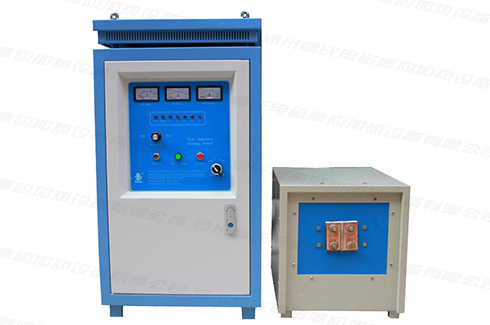After the mechanical parts are quenched and tempered by the high-frequency heating machine, necessary quality inspections are required to ensure whether they are qualified. In terms of appearance quality, the surface of the parts must be clean, and there must be no cracks, burns, rust and bruises, etc. In an environment without oxidation, some parts must not have surface oxidation. The surface hardness of the part shall comply with its drawing and heat treatment process documents. For partially quenched parts, the size deviation of its hardened zone must meet the standard range. After overall quenching and tempering, the microstructure inside the mechanical parts must meet the requirements, and the deformation and mechanical properties must meet the requirements of the drawing. However, no matter how good the technology and process are, there may be deviations and unknown possibilities, such as insufficient hardness, deformation, etc. These are common defects in the heat treatment process of mechanical parts, and we will also have corresponding solutions and prevention measure. Here, take the lack of hardness as an example to give you a brief introduction.
1. The cooling capacity of the medium is poor, resulting in the appearance of non-martensitic structures such as ferrite and troostite on the surface of mechanical parts. In this regard, the quenching medium with a faster cooling rate should be used when the high-frequency heating machine is quenched, and the quenching heating temperature should be appropriately increased.
2. The heating temperature is low during quenching, or the pre-cooling time is long, the quenching and cooling speed is low, and non-martensite structure appears. In this regard, it is necessary to ensure that the temperature of quenching heating is normal and reduce the pre-cooling time in time.
3. The steel used in the manufacture of parts has poor hardenability, and the cross-sectional size of the parts is large, so the hardness cannot be quenched. In this regard, we have to use steel with better hardenability.
4. The isothermal time is too long, which causes the austenite stabilization of the parts. In this regard, we must strictly control the classification or isothermal time.
5. Decarburization occurs on the surface of mechanical parts. For this, when heating, we must use a controlled atmosphere for heating, or take timely anti-carbon measures.
6. When the parts produced by carbon steel or low carbon alloy steel are quenched by water medium, the time for the parts to stay in the water is not enough, or the parts are taken out after water cooling, and the time for staying in the air is a bit too long. In this regard, it is necessary to strictly control the time that the parts stay in the water and strictly follow the operating specifications.
7. The heating temperature of the parts made of high-carbon alloy steel is very high when the high-frequency heating machine is quenched. For this, we observe the heating degree at any time, reduce the quenching heating temperature in time, or perform cold treatment on the parts.




 en
en  cn
cn  jp
jp  ko
ko  de
de  es
es  it
it  ru
ru  pt
pt  vi
vi  th
th  pl
pl 







 GS-ZP-1200
GS-ZP-1200


